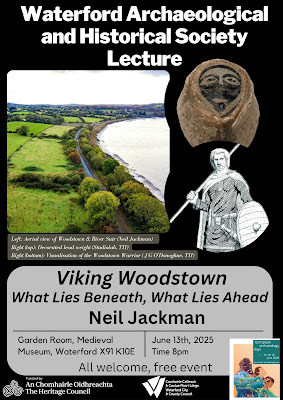The Waterford Archaeological and Historical Society 2025 – 2026 lecture series continues at 8 pm on Friday, October 17th, when John Tierney, will deliver a talk titled ‘Waterford Gravestones, Waterford Families’, in St Patrick’s Gateway Centre, Waterford (Eircode X91 YX61).
Gravestones in Waterford are historic documents carved in stone and situated in the cultural landscapes of burial grounds used by communities for centuries. There are 100 registered historic graveyards in the county, and many more cemeteries, each parish contains at least one historic burial ground.
Since 2010 the Historic Graves team, based in west Waterford, have been working with communities around Ireland to survey historic graveyards and publish the results online. In recent years our work in Waterford has focused on Ardmore, Kilgobnet and Mothel graveyards. Ardmore, the team's ‘home’ graveyard, is the laboratory for testing different methods of recording and analysis. This lecture addresses the use of modern technology to explore how recording historic headstones has allowed us develop an archaeology of families.
The talk will demonstrate how different low tech and high tech tools have been developed and used to record and analyse these carved stone ‘documents’. The Historic Graves team have been using AI tools to read field record sheets since Covid days, more recently they have had success using AI to ‘read’ inscriptions on 20th century headstones directly. In this lecture John will explore the potential of headstones recorded by the Historic Graves project to document and trace family fortunes since the early modern period, and perhaps even further back in time.
John Tierney is a field archaeologist who qualified from UCC in 1988. John has been director of the Historic Graves Project since 2010. The project has surveyed over 900 Irish historic graveyards and cemeteries, urban and rural, and published them online, in collaboration with local communities. Since 2016 John and the Historic Graves Project team have been involved in the investigation of a number of institutional burial grounds and associated burial practices such as Bessborough in Cork, Tuam, and St. Loman’s in Mullingar.
Find out more on Historic Graves Project



.jpg)







